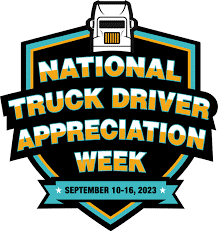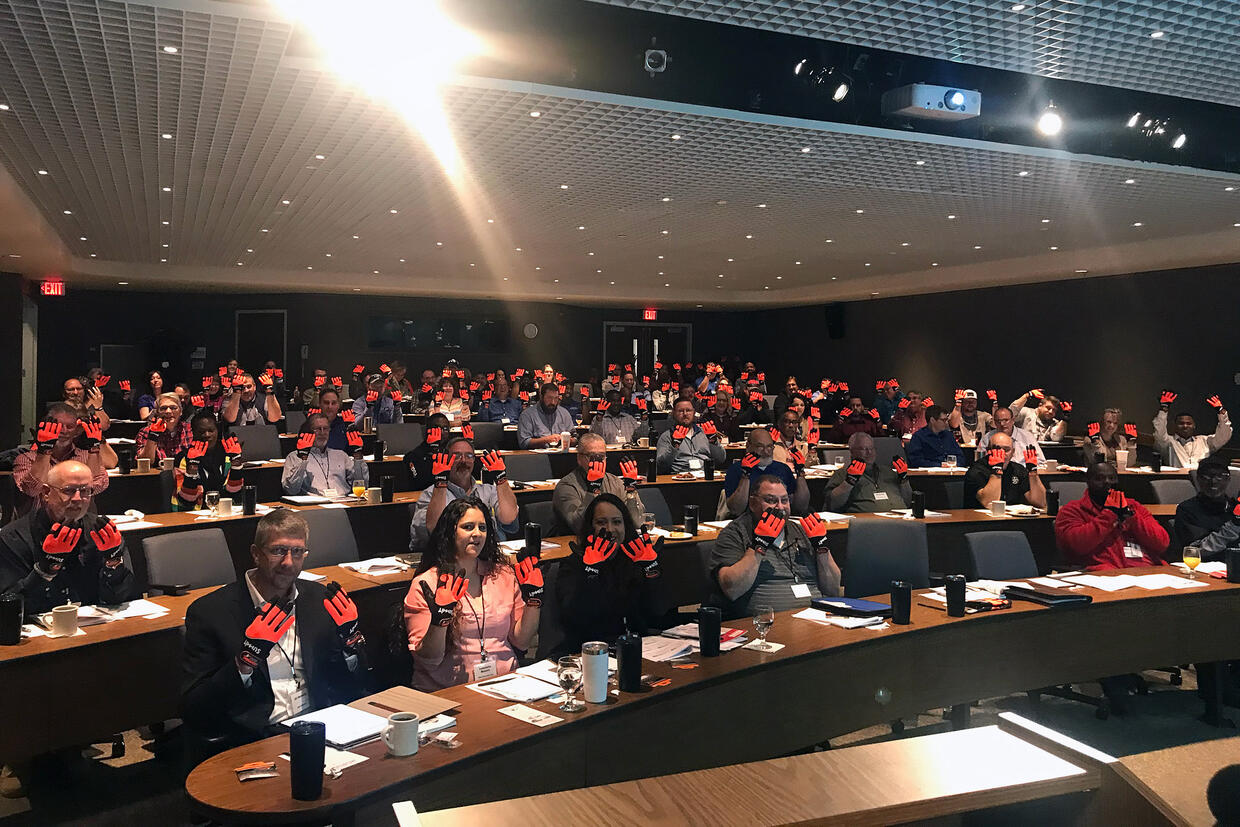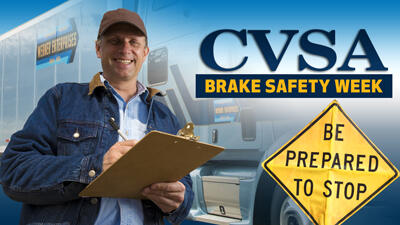Back to School Safety
This week's Safety Bulletin gives drivers tip on how to ensure maximum safety during the upcoming back to school weeks! Read the entire bulletin here and sign up for future safety bulletins delivered to your inbox!
Back-to-school season is among us! Students are returning from summer break. Pedestrian-vehicle injuries are a leading cause of death for children ages 5 to 14. Drivers are responsible for improving safety around school zones, crosswalks, bus stops, and wherever children play.
Here are some back-to-school tips:
1. Be familiar with school zones. Get in the habit of noticing where school zones and crosswalks are on your regular routes. Accidents, including pedestrian accidents, are far more likely to occur locally on roads where drivers feel more familiar and comfortable.
2. Stop for school bus lights. Always stop for school buses with flashing red lights. Drivers approaching the bus must come to a complete stop for the duration that the red lights are on. Some school buses also have flashing yellow lights, meaning drivers may proceed with extreme caution. Bus drivers often engage the flashing yellow lights before the flashing red ones, signaling they are about to stop.
3. Obey crossing guards. School crossing guards are given police training and the same authority as local traffic police in most areas, so disobeying a crossing guard could get you in serious trouble. Driving on major streets where crossing guards and crosswalks are observed is safer than taking "short-cut" side streets where children may be unattended.
4. Anticipate the worst. The speed and distance away from oncoming cars are more difficult for young children to judge. Always anticipate the chance that a small child may run in front of you by slowing down and preparing to brake.
5. Be careful around parked vehicles. Be especially careful in areas with parked cars on the side of the road. Children waiting to cross may be less visible behind parked sport-utility cars.
6. Turn your headlights on. Drive with headlights on in areas with children and pedestrians. The AAA says that headlights can reduce pedestrian accidents by about 25 percent.
7. Avoid using cell phones when driving. Cell phones are a known distraction. Never use hand-held or hands-free cell phones while driving in school zones or areas with children. The same goes for activities distracting the driver, such as changing CDs, looking at notes, and reading maps.
8. Avoid reversing. Try to avoid reversing your vehicle in areas with children. It's more challenging to see short children and attend to your car's blind spots while reversing.
9. Don't speed. Remember that the speed limit in most school zones during school times or when children are present is 25 miles per hour. Bad weather, or areas with limited visibility, will require a lower speed. Your visibility to pedestrians, ability to see them, and stopping distance are impaired by weather or road conditions, so follow common sense and slow down.
10. Don't honk at pedestrians or bicyclists. Honking a child on foot or on a bicycle is generally not a good idea. The noise could cause the startled child to trip or fall and be in a dangerous position for other approaching traffic.
School Buses and Laws
Even if you don't have kids in school, it's easy to see the increase in school buses around this time. Laws vary by state, but usually, you have to stop if a school bus is loading or unloading—no matter what side of the street it's on. A vehicle is not required to stop for a school bus when both cars are on a four-lane roadway, and the bus is stopped in the opposite direction from which the driver is traveling.
Any other time, a driver must stop before meeting or overtaking (passing) a school bus that is stopped and loading or unloading passengers.
This includes:
- Any two-lane roadway in rural areas and within city limits.
- Any street, highway, private road, or parking lot located on school property.
A warning will be given by the school bus at least 100 feet (200 feet in rural areas) before a stop. The bus driver will flash lights on the front and rear of the bus. When a bus comes to a complete stop, the stop arm signal will be extended.
A driver approaching a school bus from the opposite direction must come to a complete stop and remain stopped until the stop signal arm is no longer extended, the flashing lights are turned off, or the school bus driver signals vehicles to pass.
Passing a school bus while flashing red lights is illegal in every state. A conviction for passing a stopped school bus with flashing lights and an extended stop arm will suspend an individual's driver's license. Watch for school buses stopping at railroad tracks. Make sure to familiarize yourself with the local laws regarding school buses. In their guide, "Reducing Illegal Passing of School Buses," the National Highway Traffic Safety Administration (NHTSA) reports that many school buses are illegally passed about once daily. Some buses are even passed on the right (the side children use). https://www.nhtsa.gov/school-bus-safety/reducing-illegal-passing-school-buses
Driving Safely with School Buses
https://www.youtube.com/watch?v=lOgcm0K8_us
CFR 383.3 - Applicability
What is the largest bus you can drive without a CDL?
Any bus driver that transports 16 or more persons or that has a GVWR of 26,001 pounds or more must obtain a CDL in the applicable class with a passenger endorsement.
Do the regulations require a person driving an empty school bus from the manufacturer to the local distributor to obtain a CDL?
Guidance: Yes. Any bus driver that transports 16 or more persons or has a GVWR of 26,001 pounds or more must obtain a CDL in the applicable class with a passenger endorsement. This includes drivers transporting empty school buses on a public highway.
Are drivers required to have both the "P" passenger and "S" school bus endorsement if they are not transporting students when operating a "school bus," as defined in § 383.5?
Guidance: No. Only drivers transporting pre-primary, primary, or secondary school students from home to school, school to home, or to and from school-sponsored events in a school bus must have both the "P" and "S" endorsements. Only a "P" endorsement is required by drivers delivering school buses from the manufacturer, mechanics and other drivers operating empty school buses, and drivers transporting students and adults to and from events the school does not sponsor.
National Truck Driver Appreciation Week is September 10-16, 2023

Truck drivers keep our world running; they work endlessly to deliver the goods and resources people need. National Truck Driver Appreciation Week is an essential time for America to respect and thank all professional truck drivers for their hard work and commitment to undertaking one of our economy's most demanding and vital jobs. These 3.5 million professional men and women deliver our goods safely, securely, and on time; they also keep our highways safe.
Americans and Canadians have taken extraordinary steps to show appreciation for the vital work that professional truck drivers have done. From children passing out lunches to "I Heart Truck" signs across the highways, the public has noticed truck drivers' essential role in their lives.
This week in September is a small way to show appreciation to the 3.5 million professional men and women who deliver our goods and keep our highways safe. Start planning to do something special for your drivers this week in September that we set aside to recognize them.
Driver Recognition Awards
Driver Appreciation Week is an excellent time to review the award and recognition programs you have in place—meriting awards to drivers who perform safely and competently builds morale. A recognition award should make the driver or employee feel appreciated within the organization.
Recognition awards should be personalized and received due to an employee's performance. Awarding individuals among their peers will motivate others to have stellar safety and performance.
As a motor carrier, you can enroll your drivers in several state and nationwide association award programs. Contact your state trucking association for a listing of the available awards programs. Various awards programs are available for your drivers through organizations such as the American Trucking Association (www.truckline.com) and the National Private Truck Council (NPTC). The NPTC has the Driver Hall of Fame and National Driver All-Stars driver's awards programs available to NPTC members. Go to: www.nptc.org to enroll your driver.
Driver Incentive Awards:
Incentive monetary awards motivate a driver to perform. These incentive programs successfully encourage the driver to achieve a specific goal, such as a particular fuel mileage or a clean roadside inspection.

Registration is now open online for the 2023 Idealease/NPTC Safety Seminars!
Idealease and the National Private Truck Council NPTC will again host safety seminars in 2023. The one-day seminar this year will focus on data available from trucks today with regard to safety, basic safety and compliance, regulation changes, and CSA. The seminars will be provided to all Idealease customers, potential customers, and NPTC members at no charge. The seminar provides essential information applicable to both novice and experienced transportation professionals. Seminars currently available for registration have their venues secured. If you cannot register for the seminar in your area, check back, as registration availability will be added as the venues are secured. This information will be updated weekly in this bulletin. To register for an upcoming seminar in 2023, click here.
FALL SEMINARS (Sept-Oct)
9/19/23 Reno/Sparks | NV |
9/20/23 San Leandro | CA |
9/21/23 Oxnard | CA |
9/26/23 Flint | MI |
9/28/23 Baltimore | MD |
10/19/23 Green Bay | WI |
TBD Weirton | WV |
10/11/23 Birmingham | AL |
10/12/23 Atlanta | GA |
10/17/23 Columbia | SC |
10/17/23 Hillsboro/Portland | OR |
10/25/23 Louisville | KY |
10/26/23 Nashville | TN |

CVSA’s Brake Safety Week Scheduled for Aug. 20-26
The Commercial Vehicle Safety Alliance (CVSA) has scheduled this year’s Brake Safety Week for Aug. 20-26 with a focus on brake lining/pad violations.
During Brake Safety Week, commercial motor vehicle inspectors highlight the importance of brake systems by conducting inspections of their components and removing commercial motor vehicles found to have brake-related out-of-service violations from our roadways until those violations are corrected.
CVSA’s Operation Airbrake Program is dedicated to improving commercial vehicle brake safety throughout North America. The goal is to reduce the number of highway crashes caused by faulty braking systems on commercial motor vehicles by conducting roadside inspections and educating drivers, mechanics, owner-operators, and others on the importance of proper brake inspection, maintenance, and operation.
*The Idealease Safety Bulletin is provided for Idealease locations and their customers and is not to be construed as a complete or exhaustive source of compliance or safety information. The Idealease Safety Bulletin is advisory in nature and does not warrant, guarantee, or otherwise certify compliance with laws, regulations, requirements, or guidelines of any local, state, or Federal agency and/or governing body, or industry standard.
